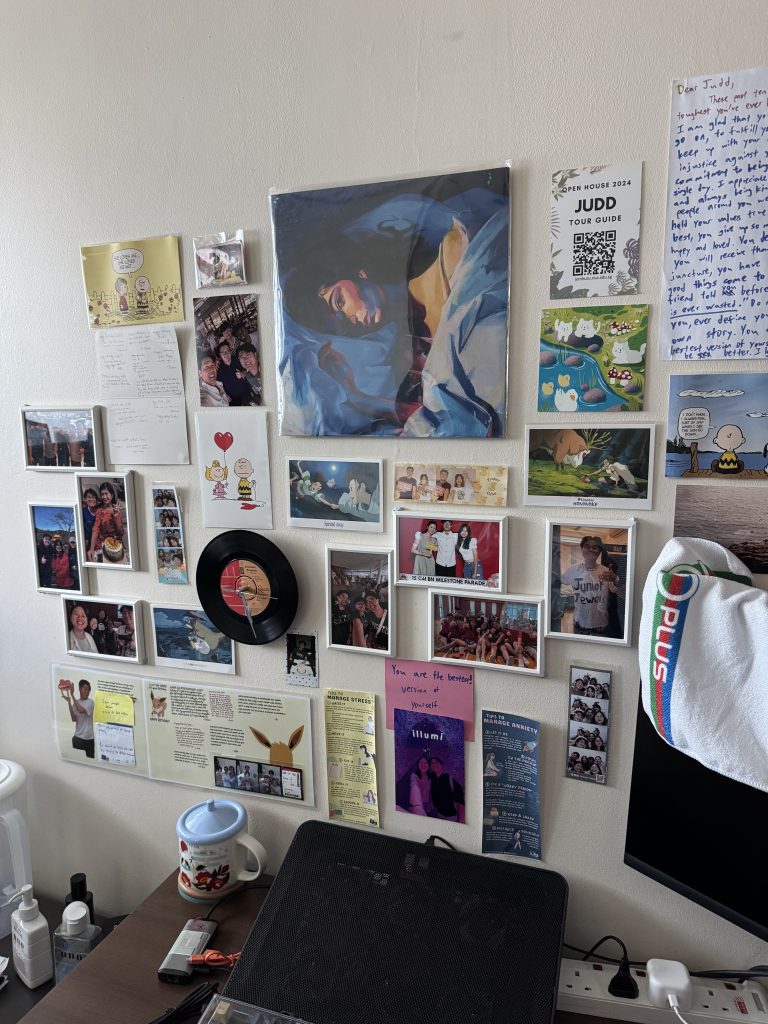On a stormy August night last year, as the ceiling fans whirred at Al-Amaan, I was with my floormates in a state of despair. I had just hosted a Student’s Tea on journalism, and the mediocre turnout had me wondering if my friends were too busy, or simply couldn’t care less. As I anxiously wondered what had gone wrong, one of my closest floormates dropped a few words of wisdom.
“You will probably only take away five friends from here when you leave, treasure what may be your last year here while it lasts.”
Earlier that year, I was comfortably in a friend group which I was spending my days with in Tembusu. In my mind, it was already set. These were to be the friends who would go through the rigours of university life with me, and continue to hang out after graduating from the college. Fate had brought us together, and I saw them as family. There would be no chance where I would have fewer than five good friends before my two years here were up.
At this point, you might be asking, why only five? Robin Dunbar, Emeritus Professor of Evolutionary Psychology at the University of Oxford, first proposed that there exists a “cognitive limit” to how many people you can maintain stable relationships with, at 150 individuals. Referred to as “Dunbar’s Number”, he argues that this is exemplified through “observations of human communities”, including hunter-gatherers and military units (the typical size of a company). Beyond 150, the people we encounter become “mere acquaintances”. The innermost layer of these 150 individuals lies what Dunbar terms the intimate “support clique”, a set of five people who you place full faith in, interacting with you at least once a week. Last year, within Tembusu, I termed my five most intimate friends the “Tembu Five”.
Dunbar’s Number illustrated by a diagram.
As my floormates bantered and exchanged quips about their experiences in their Senior Seminars that night, I remember swiveling around, looking at the various groups of NUS students that were dining in. It hit me that these groups were all drawn together by their student dorms that we respectively called home. Here in our Home of Possibilities, twenty-one floors of erudite students share memories, love, and trauma-bond over dining hall food. Where does it all go when we leave?
By this paragraph, perhaps you’re grappling with the fact that your time in Tembusu has drawn to a close, trying to identify who your five closest friends are after your two years here. You’re scrolling through your gallery, reminiscing memories of meal enhancements or study sessions in the level lounge you call home. A few familiar faces flash across your screen as you travel back in time.
Throughout these two years in Tembusu College and NUS, I have been blessed with meeting many lovely individuals. Some have taught me bittersweet lessons about life and love, while others have encouraged me to give my best in whatever I do. Most importantly, these friends let me know whenever the dining hall has the egg station set up for breakfast. I would not have got to where I am today without them.
Friendships that have inspired me in university.
“In prosperity, it is very easy to find a friend; but in adversity it is the most difficult of all things.” – Epictetus
The word ‘friend’ is derived from the Old English verb frēon, which carries the meaning of “to love, like, honour, or to set free”. It has a beautiful beginning, though one that often doesn’t match the reality we grow into. Over time, most of us learn that friends come and go. There’s no denying that. The diverging paths we take after each school—primary, secondary, tertiary—only serve to build the walls that keep us apart. The texts dry up, the meetings become rare, and you soon find yourself limited to receiving “happy birthdays” and the occasional Instagram like. Friendships can fade, and they can sometimes change. The peril of friendships is that it can also evolve to one of give-and-take. Whether it be a friend who begins to solely come to you for personal favours, or one who only approaches you to vent without asking how you are, friendships can unfortunately become transactional. I have regretfully been on both ends of these friendships in the past. They’ve taught me how essential it is to communicate boundaries early—because without them, even good intentions can wear thin.
It took me a long time to reflect on who truly belonged in my ‘Tembu Five’, as my past experiences of being misunderstood and neglected have made me wary of who I let in. I have friendships that I hold close to my heart now, but I also had friendships that have unraveled, as strife revealed the incongruity between the respective values we held. These friendships, though relatively short-lived, left me in a disproportionately long state of anxiety and grief when they faded out. Despite not being central figures in my life, our shared experiences and familiarity we had built became woven into my Tembusu identity, creating bonds that can never truly be replaced.
In facing these adversities, I’ve also had to confront my own shortcomings—how my own fears, habits, or silence had played a part in these “friendship breakups”. But through that discomfort, I’ve been trying my best to show up more honestly, to hold space for others, and to be more intentional in the way I nurture my current friendships. It reminds me of the difficult truth that no friendship remains untested by time, and that a lasting friendship requires devotion, vulnerability, and mutual effort, come hell or high water.
West Coast Park, my safe haven and where I’ve picnicked with my friends.
While the idea of Dunbar’s Number is a psychologically-backed theory in classifying the people we interact with, I found that it quietly began to weigh on me. I started putting people into Dunbar’s “boxes”, which I found to be a narcissistic and self-serving thing to do. It wasn’t until I caught myself constantly ‘keeping track’ of which five people in Tembusu I could fully trust that I realised how limiting and harmful that mindset had become for me. That was when I decided to stop taking it so seriously.
After all this time, I’ve found that the friends that have survived the test of time are those who accept us for who we are. They stand by us in times of crisis, even when others don’t. They hear us out, time and time again, about the same issues that we’ve been caught in. They attempt to empathise with our perspectives. Above all, they forgive. Like Chandler and Joey in Friends or Jake and Charles in Brooklyn Nine-Nine, friends have the ability to dampen the trials and tribulations we encounter as we find our direction in life. In Tembusu terms, they advise you on which Senior Seminars to bid for, and how to increase your odds of getting a third-year stay.
After casting Dunbar’s Number aside, I began to adopt a more “laissez-faire” approach towards friendships, allowing them to unfold more naturally. I know it sounds contradictory, especially after stating how an enduring friendship requires mutual effort from both parties.
Spontaneity in friendships often yield precious moments like these.
But hear me out. The commonalities in interests, faculty, or even the level you live on may help you meet new friends. However, in the shared space of a university, we all eventually reach the last tutorial or IG session. Effort still deeply matters in maintaining friendships. Yet what truly allows them to transcend time and space are shared values and the ability to communicate and compromise. These, I believe, are tied to intrinsic dispositions—things we can’t always control—leaving much up to fate. And maybe that’s the most endearing part: that each time we enter a friendship without knowing where it will lead, we are also discovering what we stand for.
It won’t be easy to stay in touch with the people we’ve come to love after leaving Tembusu. As you’ve probably gathered by now, I no longer believe in the idea of a fixed ‘Tembu Five,’ nor do I expect to stay close with many friends from here after graduating from the UTCP. But remember this: whether it’s five, fifty, or just two—you have friends who will weather storms with you. More importantly, they’re the ones who will help you grow into a better version of yourself. The least we can do is show up for them in return, through life’s highs and lows, well into the golden years. You might not know exactly who they are right now, but trust that they’ll show up when you need them most.
The chalk markings on our doors stand as a testament to the bonds we have made and the Tembusu-specific experiences we will never encounter anywhere else. Before checking out this week, take a gander at every one of these messages. As you wipe them off before leaving for the summer, reflect on the beautiful times you’ve had and celebrate the friends who have walked with you, and will continue to do so beyond. As the opening theme for Friends goes, they’ll be there for you, and you’ll be there for them too.
Diagram of Dunbar’s Number from New Scientist
About the Author
Judd is a second-year Political Science and History major who believes that Melodrama by Lorde is the best album of the past decade. When not training for marathons or reading up on Adlerian psychology, he loves a warm cup of chamomile tea while supporting Chelsea Football Club in the comfort of his room.
References
Dunbar, R. (n.d.). Dunbar’s number. New Scientist. Retrieved from https://www.newscientist.com/definition/dunbars-number
HarperCollins. (2022). Friend. In The American Heritage Dictionary of the English Language, (5th ed.). Retrieved from https://ahdictionary.com/word/search.html?q=friend
Lindenfors, P., Wartel, A., & Lind, J. (2021). ‘Dunbar’s number’ deconstructed. Biology Letters, 17(5), 1-4. https://doi.org/10.1098/rsbl.2021.0158
Mrkovic, L. (2023). Social Networks: The Dunbar 5-15-50-150. UpHabit. Retrieved from https://uphabit.com/2023/01/08/social-networks-the-dunbar-5-15-50-150/









